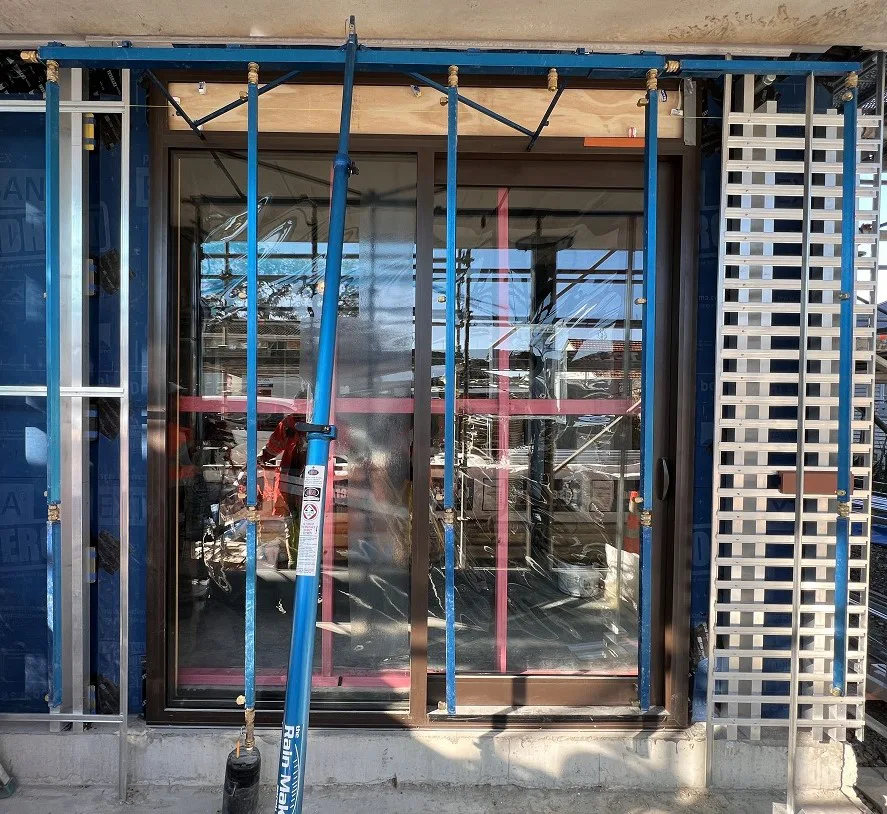New Zealand Construction Industry: Unveiling the complex layers
The New Zealand construction industry often involves multiple layers of sub-contractors working on commercial sites, posing challenges regarding quality assurance. However, implementing onsite testing measures can be a valuable tool to ensure and improve the overall quality of construction projects.
Onsite testing quality assurance for the construction industry
The services offered by Rommel for the New Zealand construction industry test the manufacturing quality of window and door suppliers, and the junction between the cladding and the windows, which is a critical final weatherproofing junction in the thermal envelope of any building.
Who is responsible for the junction between cladding and windows and doors?
The junction between building cladding and windows/doors plays a crucial role in maintaining the thermal envelope of a building. Which sub-contractor is responsible? Does the cladding contractor finish the junction and seal between the windows and doors and the cladding? Or does whoever install the windows and doors seal between the cladding and windows and doors? This junction is usually the last to be enclosed before the interior can be started, and its crucial to get this junction correct.
The thermal envelope
The thermal envelope acts as a barrier that separates the conditioned interior from the external environment, helping to regulate indoor temperature and reduce energy consumption. Properly addressing the junction between cladding and windows/doors is essential for achieving optimal thermal performance and energy efficiency in a building.
One of the primary reasons why this junction is critical is because it is a potential weak point for thermal bridging. Thermal bridging occurs when there is an area of increased heat transfer, typically caused by a break in the insulation layer or an area with higher thermal conductivity. If not properly addressed, the junction between cladding and windows/doors can create thermal bridges, resulting in heat loss or gain, depending on the external temperature. These thermal bridges can compromise the overall energy efficiency of the building and lead to increased heating or cooling demands.
Air leakage
Another aspect to consider is the potential for air leakage. The junction between cladding and windows/doors should be sealed properly to prevent air infiltration and exfiltration. Air leakage can significantly impact energy efficiency and indoor comfort by allowing conditioned air to escape and unwanted outside air to enter. By ensuring an airtight seal at this junction, the building’s energy performance can be optimized, reducing the need for excessive heating or cooling to maintain a comfortable indoor environment.
Mositure management
Furthermore, addressing the junction between cladding and windows/doors is essential for moisture management. Moisture infiltration can occur if there are gaps or improper flashing details at this junction, leading to condensation, water damage, and potential mold growth. By implementing proper moisture management strategies, such as effective flashing and sealing, the risk of moisture-related issues can be minimized, ensuring the longevity and durability of the building.
Aesthetics
In addition to thermal, air, and moisture considerations, the junction between cladding and windows/doors also plays a role in the overall aesthetics and functionality of the building. It contributes to the architectural design and visual appeal while also ensuring proper functionality, such as ease of operation and weather resistance.
Quality assurance onsite testing for the construction industry
To address the importance of this junction, it is crucial to involve quality assurance practices such as facade testing during the installation phase of cladding and windows and doors. Onsite facade testing refers to the practice of conducting various tests and inspections directly at the construction site, allowing for immediate identification of any potential issues or defects. This proactive approach enables early detection and rectification of problems, resulting in higher quality outcomes.
One key benefit of onsite testing is that it helps in maintaining quality control throughout the construction process. Windows and Cladding are usually separate contracts, and often the installer is yet another sub-contractor on the building site. With onsite testing, each sub-contractor can be held accountable for their work, as their performance can be regularly assessed through onsite testing. This ensures that all construction activities meet the required standards and specifications, reducing the likelihood of errors or subpar workmanship.
Moreover, onsite testing allows for real-time feedback and collaboration among sub-contractors. By conducting tests on the spot, any discrepancies or non-compliant work can be immediately addressed, preventing the need for rework or costly delays. This collaborative approach fosters effective communication and coordination among the different layers of sub-contractors, leading to smoother project execution and enhanced overall quality.
Furthermore, onsite testing also provides a platform for continuous improvement. By analyzing the results of the tests, construction teams can identify trends, patterns, and areas for improvement. This data-driven approach enables the implementation of targeted measures to enhance the quality of future projects, reducing the likelihood of recurring issues and optimizing construction processes.
The New Zealand construction industry’s multiple layers of sub-contractors on commercial building sites can benefit greatly from implementing onsite testing measures. Through this approach, quality assurance can be enhanced, accountability can be maintained, collaboration can be fostered, and continuous improvement can be achieved. By prioritizing onsite testing, construction projects can strive for excellence and deliver high-quality outcomes.


